Coral bells (Heuchera spp.) are perennial plants that will truly enhance your garden’s aesthetics like no other flower can. Whether you are looking for full, leafy coverage in the corners of your garden or delicate, slender flower stalks to make your landscape pop, coral bells can do it all! This guide will help you understand the basics of caring for this unique flower and why it should be the .
What Do Coral Bells Look Like?
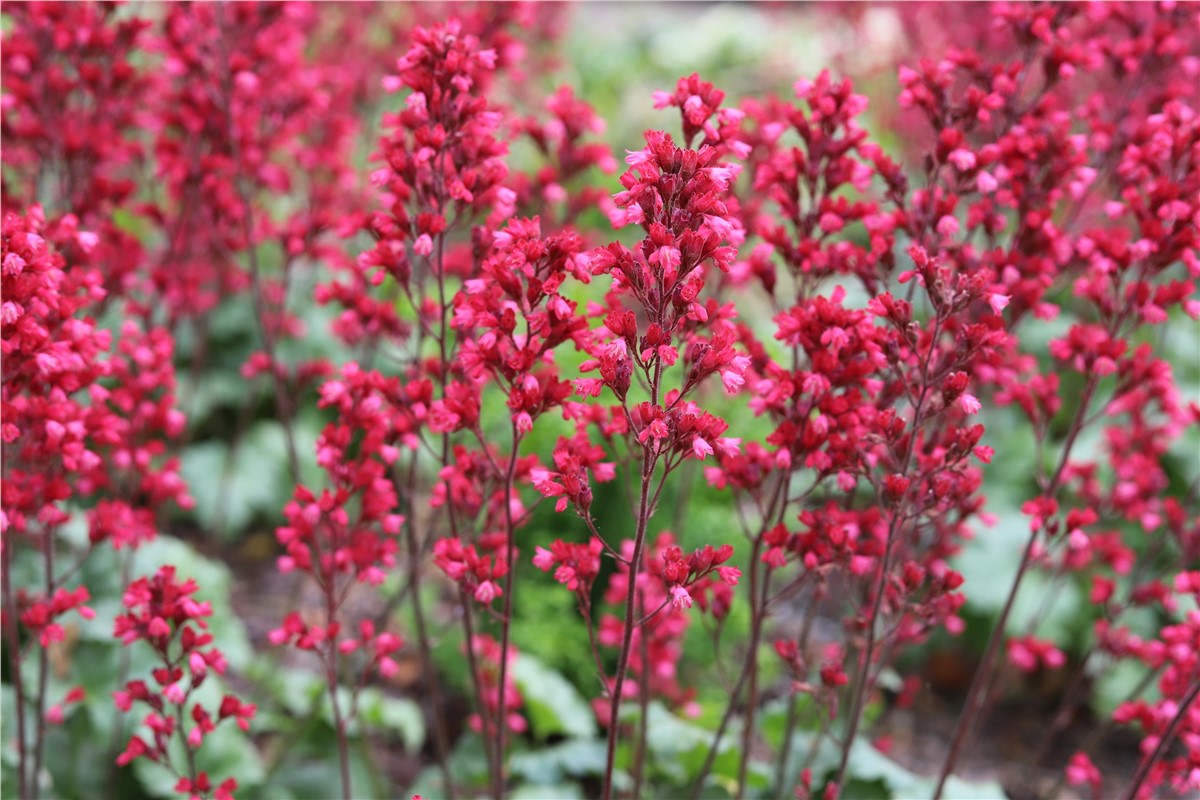
Coral bells are known for their vibrant, richly colored foliage, which is the primary reason they are so beloved in gardens. Unlike many plants that are grown primarily for their flowers, the appeal of coral bells lies in their leaves, which come in an array of colors. The leaves of coral bells come in a range of colors, such as green, purple, burgundy, silver, orange, and even black. Their leaves can be round, heart-shaped, or have ruffled edges, and the texture of the leaves can also vary, with some being smooth and glossy.
In addition to their beautiful leaves, coral bells also produce slender flower spikes that rise above the foliage in late spring to early summer. These upright flower stalks, which can reach up to 18 to 24 inches tall, are adorned with small, bell-shaped blooms (hence the name) in colors such as white, pink, red, or, coral (of course). While the flowers are more understated compared to the leaves, they provide an added bonus by and hummingbirds to the garden.
Common Types Of Coral Bells

There is a wide range of coral bell cultivars available, each with its unique combination of leaf color, pattern, and flower characteristics. This diversity makes them an excellent choice for gardeners looking to add color and variety to their landscapes. Below are the common names of just a few varieties that homeowners in the Pacific Northwest have come to love in their gardens.
- Palace Purple: Known for its dramatic deep burgundy to almost black foliage, this variety is arguably the most popular type of coral bell. It produces small, white flowers in late spring.
- Caramel: This variety features peachy-orange leaves that turn a soft caramel color as they mature. The foliage color can intensify in cooler temperatures, providing seasonal interest.
- Lime Marmalade: With bright lime-green leaves, this cultivar is perfect for brightening up shaded garden areas. It has a ruffled leaf texture that adds depth and texture.
- Obsidian: Featuring glossy, nearly black foliage, ‘Obsidian’ provides a striking contrast in any garden. Its dark leaves hold their color throughout the growing season.
- Berry Smoothie: This variety is known for its large, vibrant pink leaves that gradually turn purple as they mature. It’s an excellent choice for those looking for a bold pop of color.
Life Cycle Of Coral Bells

As herbaceous perennials, coral bells go through a yearly cycle of growth, blooming, dormancy, and regrowth. With proper knowledge of how these flowers grow, along with regular maintenance, coral bells typically live for up to 4 or 5 years in optimal conditions.
Spring
In the spring, new growth emerges as temperatures begin to warm up, with fresh leaves sprouting from the crown of the plant. During this time, the plant focuses its energy on developing its foliage, which is often at its most vibrant in spring and early summer, which is when its flowers start to bloom.
Summer
Throughout the summer, coral bells maintain their vibrant foliage, and their flowers continue to attract pollinators to the garden, further spreading the presence of these beautiful flowers across surrounding areas. Deadheading, or removing spent flowers, can help prolong the blooming period and keep the plant looking tidy.
Fall
As fall approaches and temperatures begin to drop, the foliage color of coral bells may intensify, providing striking visuals in the landscape. This is especially true for varieties like Caramel and Berry Smoothie which can take on deeper hues in cooler weather.
Winter
In winter, coral bells enter a period of dormancy. In colder climates, the foliage may die back to the ground, but the crown of the plant remains protected beneath the soil. In milder climates, some foliage may persist through the winter months, providing color to a garden when most other plants have gone dormant.
Optimal Conditions For Coral Bells
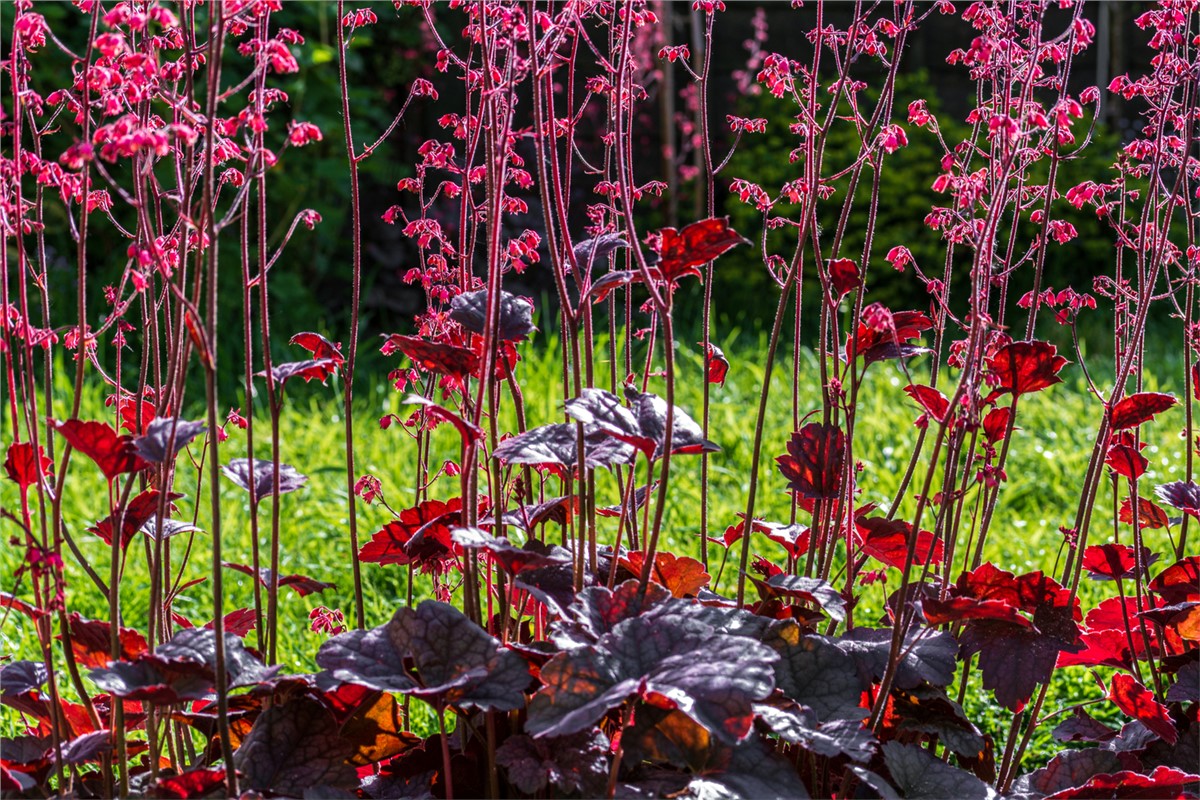
Coral bells are incredibly versatile and can adapt to a variety of growing conditions, making them suitable for many different garden settings. They are hardy in USDA Zones 4 to 9, which means they can thrive in a wide range of climates from relatively cold regions to warmer areas. In colder zones, coral bells benefit from a protective layer of mulch during the winter months to insulate their roots and crowns from freezing temperatures. In warmer climates, especially in summer, they are more sensitive to intense sun and heat, so they tend to perform better in partial shade.
When it comes to light requirements, most coral bells prefer partial shade, which is ideal for maintaining their vibrant foliage colors and preventing leaf scorch (discoloration). Varieties with darker foliage, such as Obsidian or Palace Purple, can tolerate more shade, which helps to maintain their deep, rich colors. On the other hand, varieties with lighter or more colorful leaves, like can handle more sun exposure, particularly in cooler climates where the sun is less intense. The soil in which coral bells are planted should be well-drained and moderately rich in organic matter. They prefer a slightly acidic to neutral pH and will struggle in heavy clay soils that retain too much moisture, which can lead to root rot and less-than-ideal growth.
How To Care For Coral Bells In Your Garden
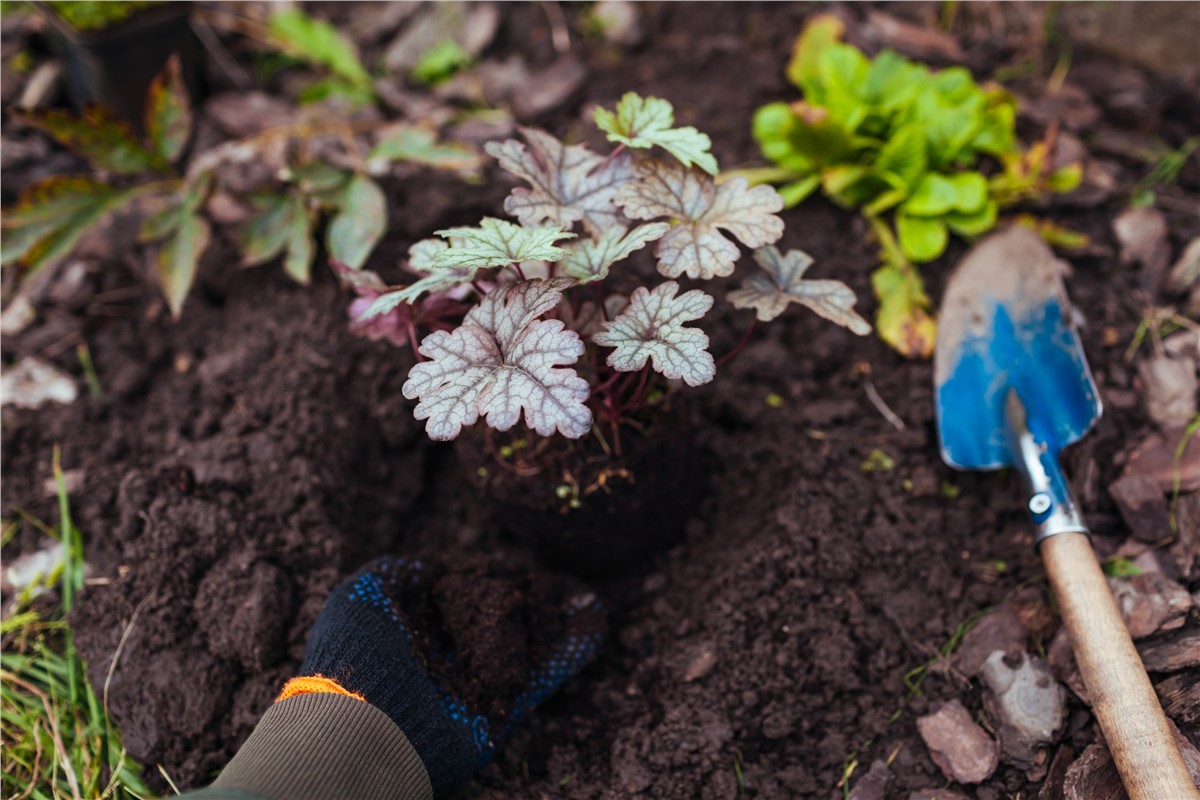
Caring for coral bells is relatively straightforward, but understanding their specific needs will help ensure they thrive and remain healthy for years to come. Coral bells are relatively resistant to pests and fungal diseases, but infestations are always a possibility without regular care and maintenance of your garden. We hope the information below will help you get started when you go to plant coral bells in your own garden, but we would love to come do the work for you! To get the most out of your garden, be sure to ask us about all of our landscaping services for Portland, OR and Vancouver, WA!
- Planting: Plant coral bells in early spring or fall when temperatures are cooler, allowing them to establish their root systems. Space plants 12 to 18 inches apart to provide adequate airflow and room for growth. Make sure the crown is level with the soil surface to prevent rot.
- Watering: Coral bells prefer consistently moist soil, especially during their first growing season. Water deeply once a week, allowing the soil to dry slightly between waterings. Mulching around the plants can help retain moisture and regulate soil temperature.
- Fertilization: Apply a balanced, slow-release fertilizer in the spring to promote healthy growth. Too much nitrogen can result in lush foliage at the expense of blooms, so avoid over-fertilizing.
- Pruning & Maintenance: Remove spent flower stalks to encourage more blooms and keep the plant looking tidy. In late fall or early spring, trim back any dead or damaged leaves to encourage new growth. Every 3-5 years, divide mature plants to rejuvenate them and prevent overcrowding.
- Pest & Disease Management: Coral bells are generally pest-resistant but can occasionally suffer from aphids, weevils, or slugs. Use organic insecticidal soap or hand-pick pests as needed. Ensure proper spacing and good airflow to prevent fungal diseases like powdery mildew.
- Winter Care: In colder climates, apply a thick layer of mulch (up to 4 inches) around the plants after the first frost to insulate the roots. Avoid heavy pruning in late fall to provide some protection to the crown, which will help ensure that your coral bells return in spring!
Subscribe to Simple Lawns's Blog




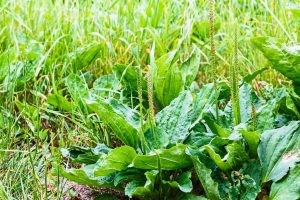

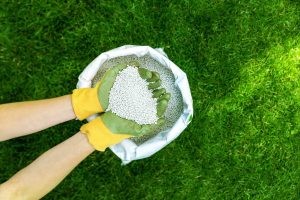


Comments
This article has an inaccuracy . Dark-leaved varieties are often more sun-tolerant, and lighter varieties tend to need more shade. This article says the opposite